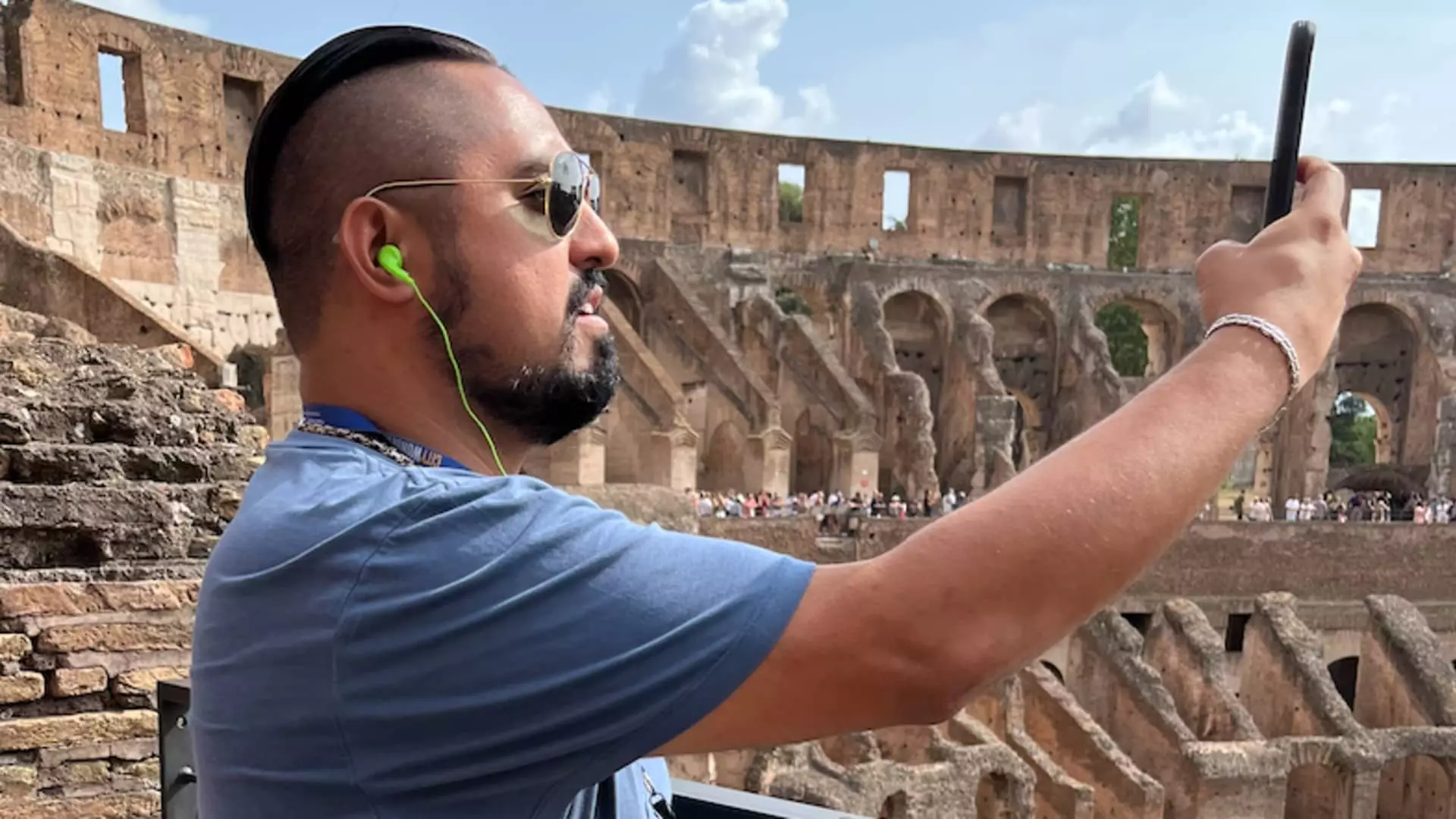Traveling through Rome—a city steeped in history and architecture—offers an enriching experience that combines the past with modern technology. When I found myself beneath the profound beauty of the Pantheon with my mom, prior to starting our audio tour, I decided to engage in a different, unorthodox form of exploration: artificial intelligence. This time, I wasn’t merely a traveler; I was a curious explorer utilizing the AI tool, ChatGPT, to enhance our journey.
Initially, I sought basic information about the Pantheon—its history, structure, and significance. While ChatGPT provided useful details, it lacked the engaging narrative I had hoped for. Thus, I refined my request, encouraging ChatGPT to adopt the persona of a tour guide. My aim was to turn the mundane into the extraordinary. “Chef, welcome to the Pantheon,” it greeted me, drawing me into a dialogue enriched with historical context and vivid storytelling.
The Pantheon is indeed an architectural marvel, renowned for its massive dome which serves as the largest unreinforced concrete structure globally. Standing in its shade, I couldn’t help but marvel at its grandeur as the chatbot’s descriptions enveloped me in a narrative of gods, emperors, and the creative spirit that flourished in ancient Rome. Such interactions with AI are a testament to technology’s role in redefining our exploration of cultural landmarks.
The juxtaposition of artificial intelligence and human expertise became pronounced during our trip. Although ChatGPT provided an informative supplement to our visits, it was our human tour guides who truly enriched our experience. Our guide, Amy, at Vatican City, navigated through zillions of tourists, offering insights and anecdotes that only a seasoned expert could provide. She imparted her passion for the art and history of the Vatican, preparing us to be awestruck by the intricate marvel of the Sistine Chapel.
No AI could replicate the thrill of encountering a passionate human guide, who narrated stories with an infectious enthusiasm. Technology may provide information, but the emotional connection, the sharing of stories, and the spontaneity of human interactions are irreplaceable. While I greatly appreciated using ChatGPT for spontaneous inquiries, my gratitude for skilled human guides was unwavering.
One of the most delightful aspects of traveling is the ability to wander aimlessly through historical streets and stumble upon hidden gems. After our visit to the Pantheon, my mom and I ventured into Santa Maria sopra Minerva, a Gothic church shrouded in relative anonymity. Here, I turned to ChatGPT to learn more about this understated yet magnificent structure.
ChatGPT quickly provided insights into the church, highlighting its significance within Rome’s landscape. “This breathtaking structure houses treasures that illustrate the synthesis of the ancient and the holy,” it noted, encapsulating the essence of ancient Rome’s eternal dialogue between spirituality and artistry. The chatbot revealed the hidden gem of Michelangelo’s Christ the Redeemer statue, an experience amplified by our solitude in the church.
Alone, in the shadow of such incredible art, we appreciated the moment far more than if the church had been crowded with tourists. The AI tool had become an extension of our curiosity, seamlessly integrated into our exploration, providing timely information that encouraged deeper engagement with the space around us.
As I reflect on our adventure through Rome, it’s compelling to consider how modern technology intertwines with our historical understanding. On one hand, AI like ChatGPT broadens our access to information and enhances our travel experience with immediacy and personalized guidance. On the other, it also serves as a reminder of the irreplaceable value of human connection.
Ultimately, travel is about discovery—discovering new landscapes, new cultures, and even new ways of understanding the world. In Rome, where every cobblestone has a story, the interplay between human and artificial intelligence provided a unique lens through which to view these tales. And while AI may never replace the warmth of a passionate guide, it can augment our experiences, fostering an engaging choreography of exploration and learning.
Thus, as we embark on future journeys, the integration of AI into our travels signals a new era of exploration—one where the richness of history and modern technology can coexist and enhance our understanding of the world. Whether as a digital companion or a human guide, the essence of exploration remains unchanged: it is about connecting with the world around us and immersing ourselves in its profound narratives.

